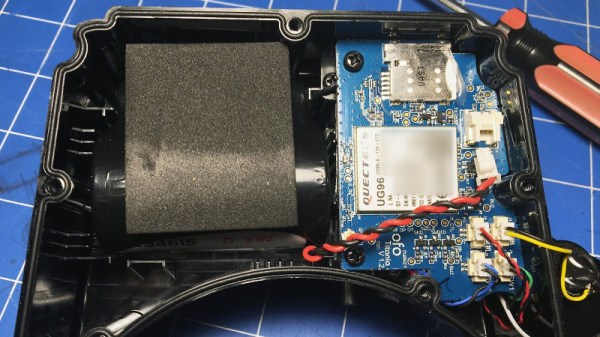If you are fortunate enough to live in a tiny settlement of no significance then perhaps you will be a stranger to bike sharing services. In many cities, these businesses have peppered the streets with bicycles secured by electronic locks for which the “open sesame” command comes through a Bluetooth connection and an app, and it’s fair to say they have become something of a menace. Where this is being written there are several competing brands of dubious market viability, to take a trip across town is to dodge hundreds of them abandoned across pavements, and every one of our waterways seems to sport one as jetsam courtesy of our ever-creative late-night drunks.
However annoying they might be, these bikes are electronic devices, and it’s thus interesting to read a teardown of one courtesy of [Electric Dreams]. The bike in question is in Australia and comes from Ofo, and it is very much worth pointing out that it is their property and prying it open is almost certainly a crime.
The bike itself is a fairly unexciting and rugged, with the electronics sitting in a module incorporating a back wheel lock sitting somewhere above where the rear brake might be. Inside is a custom board with GPS, GSM, and Bluetooth, and unexpectedly for an Aussie bike, a Netherlands SIM. Underneath the board is a motor and gearbox to activate the lock, but none of these parts are unexpected. The interesting angle of us comes from the power source, which is a D-sized lithium thionyl chloride cell, a primary cell rather than the expected rechargeable. These cells have a huge energy capacity, but at the expense of a truly nasty electrolyte and a high internal resistance which means they are limited to delivering tiny currents lest they explode. To power the radios and motor in the Ofo, the designer has added a supercapacitor which presumably charges slowly and can then dump the required power when needed.
So bike share bikes have no great surprises in their electronics but a minor one in their power source. Curiosity sated, no need for anyone else to break the law for another look. It’s interesting to see a large lithium thionyl chloride cell in the wild, and it would be even more interesting to know whether Ofo get good life from them. Maybe our commenters will know. Or perhaps someone should ask the Feds.
Thanks [xtra] for the tip.












